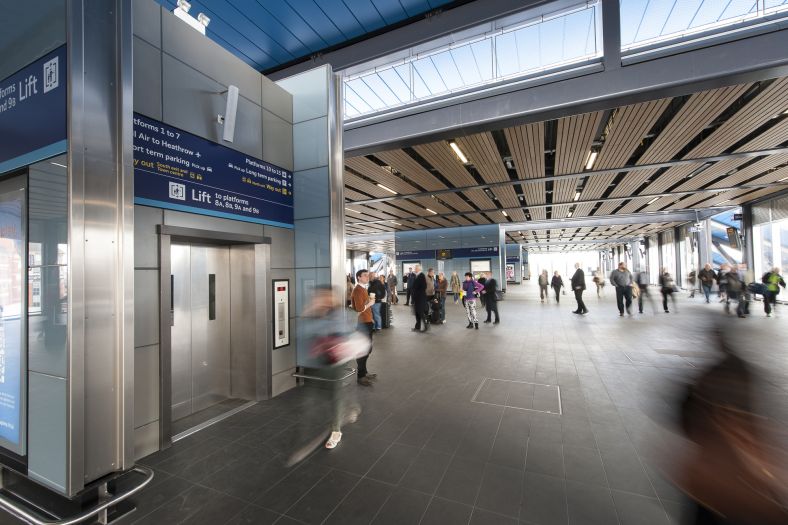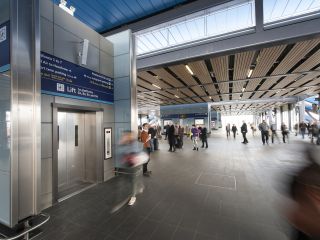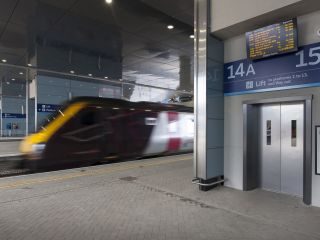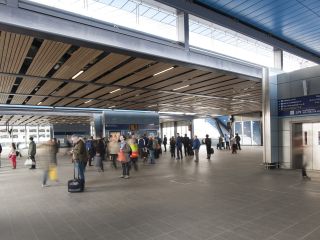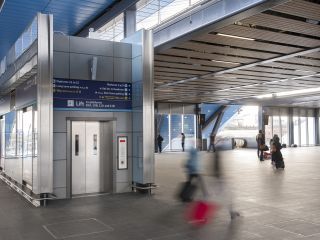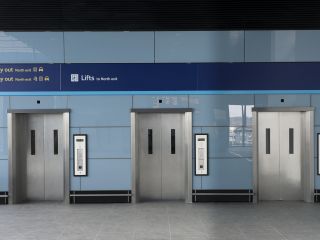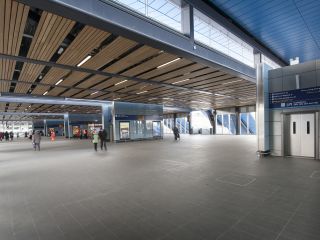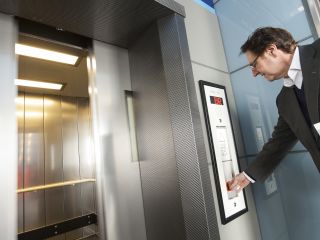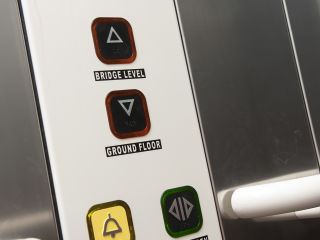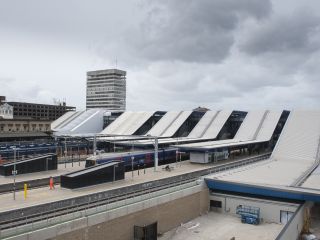Case Study: Stannah at Reading Station: Fast-tracking access in a radical rail refurb.
How 14 Stannah passenger and goods lifts helped power a 21st century rail service.
Reading Station – in need of a rethink
Reading Station is one of the busiest parts of the UK’s rail network but the complicated track layout constricted the number of trains needed to meet the demands of a modern rail service. Network Rail is addressing this need by ‘rebuilding the railway to provide for more trains, fewer delays and a better station’. Works comprise changing the track layout and building new platforms and entrances to promote the free-flow of trains and their passengers.
Stannah – helping the rethink happen
With a portfolio of substantial Network Rail lift refurbishments to its credit, Stannah was first in line for the people-movement revamp, delivering fourteen bespoke lift systems on time and budget. With five new platforms and a passenger footbridge to service, the new lifts will help provide the extra people and goods movement needed for step-free access throughout the station.
Scope of work – responding to pressure
Stannah responded to challenging deadlines to complete the fourteen bespoke lift installations in an emerging new station adjacent to a fully functioning existing hub. In particular, the Stannah team worked 24-7 over a three-month period when ten of the lifts were installed simultaneously.
In September 2012 a huge bridge (constructed alongside the fully operational station) was installed overnight. The main station concourse is sited on this bridge and is the hub of the station, providing access to every area.
Clients – a hat-trick of heavyweights
Network Rail: The Authority responsible for the United Kingdom's railway network.
Costain/Hochtieff: Joint principal contractors – an international engineering and construction partnership.
Redevelopment Timeline: 2010-2015
Winter 2010: First Phase of work completed over Christmas
Spring 2011: Modernisation work starts
Winter 2012: Platforms renumbered and the new southern platform opens; Cow Lane bridge (south) opened
Spring 2013: The improved station opens with new platforms and entrances – and 14 Stannah bespoke passenger and goods lifts
Autumn 2013: New train depot opens
Spring 2015: Viaduct to cut delays
Summer 2015: Project complete
The 14 Stannah lifts – tailored to suit
One of Stannah’s specialties is tailoring lifts to exacting criteria. All fourteen hydraulic lifts in Reading Station were built to Network Rail specifications; and, with an eye to eco-issues, Stannah used energy-saving gas counter-balance accumulators.
On entering the station from the north side two 16-person (1200kg) passenger/goods lifts provide travel to the elevated bridge area. A third matching lift travelling three stops, with a capacity of 20 persons (1500kg), is for staff use only and is operated by a swipe card system. At bridge level these lifts appear as a triplex, adjacent to the escalators.
The bridge features a series of five central lift shafts running right across the concourse, each plinth housing two lifts; one for passenger use and a second that can be used by staff with goods too. The five 2-stop 16 person (1200kg) passenger lifts travel 7 metres to the platforms below. The five 2-stop 20-person (1500kg) staff/goods lifts travel 7 metres to and from service areas.
An additional four 4-stop 16-person lift for staff use only sits in the corner of the bridge back of house for office staff.
Lifts specification – the nitty-gritty
General features
All the lifts benefit from a tough finish for optimum performance in a demanding environment:
Lift car:
Side walls: 16 gauge, 316 grade linen-pattern stainless steel
Entrance returns: 16 gauge, 316 grade Raltex 6WL pattern matt black stainless steel
Panel interface: Black Darvic strip
Skirting: 14 gauge 316 grade satin stainless steel
Ceiling: 16 gauge white powder coated
Station: 3mm 316 grade satin stainless steel. New Gardenia BS10815
Doors: 16 gauge 316 grade linen-pattern stainless steel
Flooring: Altro Atlas 40. Anvil
Handrails: Stainless steel New Gardenia BS10815
Landing Entrances:
Doors: 16 gauge 316 grade linen-pattern stainless steel
Surrounds: 16 gauge 316 grade Raltex 6WL pattern matt black stainless steel
Landing sills: Bronze
A range of operational features:
Speed: 0.63m/s
Hydraulics: tandem direct and indirect
Buffer supports: Bucher or Stannah
Ram: Bucher
Up over travel: 350mm or 210mm
Down over travel: 150mm or 120mm
Lift specific details
Platform 7 to bridge level
2 lifts: 1 public, 1 staff
Capacity: 16 person / 20 person
Load: 1200kg / 1500kg
Travel: 7190mm
Platforms 8/9 to bridge level:
2 lifts: 1 public, 1 staff
Capacity: 16 person / 20 person
Load: 1200kg and 1500kg
Travel: 7122mm
Platforms 10/11, 12/13, 14/15 to bridge level:
6 lifts: 3 public, 3 staff
Capacity: 16 person / 20 person
Load: 1200kg / 1500kg
Travel: 6760mm
Northern Entrance to bridge level:
4 lifts: 3 public, 1 staff
Capacity: 3 x 16 person, 1 x 20 person
Load: 1200kg and1500kg
Travel: 12910mm
The motor rooms
All the lifts are hydraulically driven with their motor rooms housed beneath the escalator voids on the entry level of the station on both the north and south sides of the complex.
Compliance – for total reassurance
All fourteen Stannah lifts meet all regulations, standards and directives, and help Network Rail meet the requirements of the Equality Act 2010.
Maintenance – for total support
All the Stannah lifting equipment at Reading is supplied with guarantees and is maintained by the Brackley branch of Stannah Lift Services, covering South Midlands and Home Counties as part of the nationwide service and maintenance contract with Network Rail.
“Working on the emerging new building, immediately adjacent to the existing and fully functioning station, was extremely demanding. The logistics and time constraints around the lift installations meant our efforts were 24/7 to meet the deadlines and open the new station to the public. The fully accessible station is on an impressive scale and our lifts are literally central to the day-to-day life of Reading Station.”

